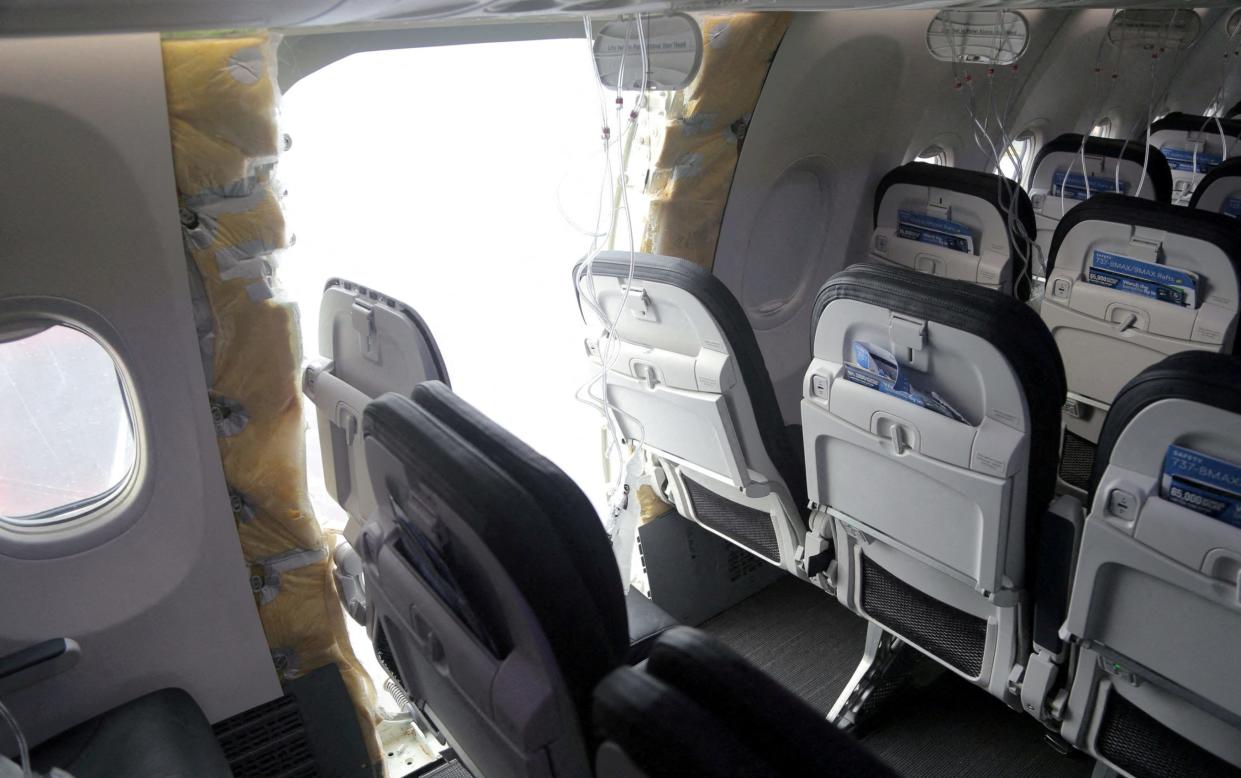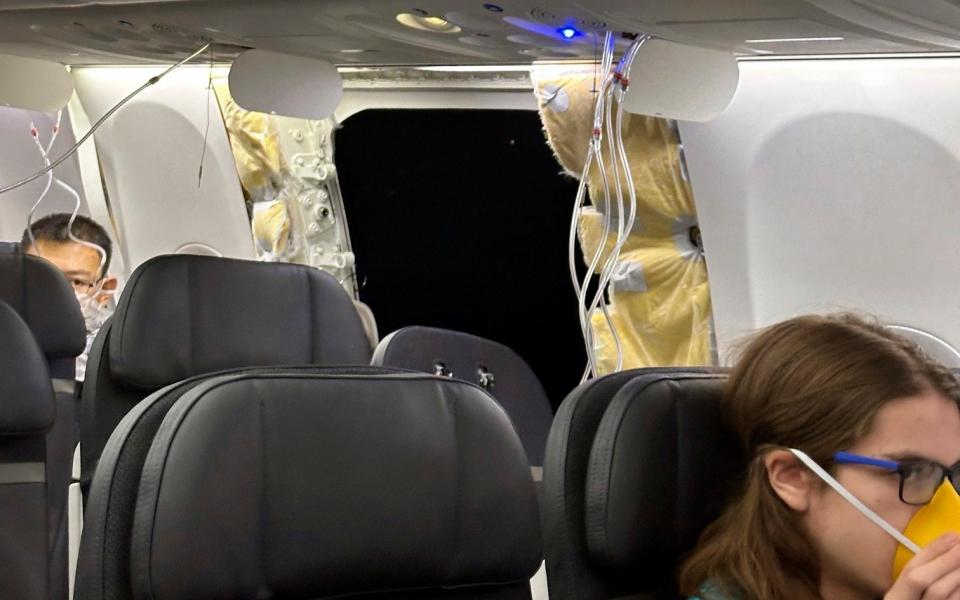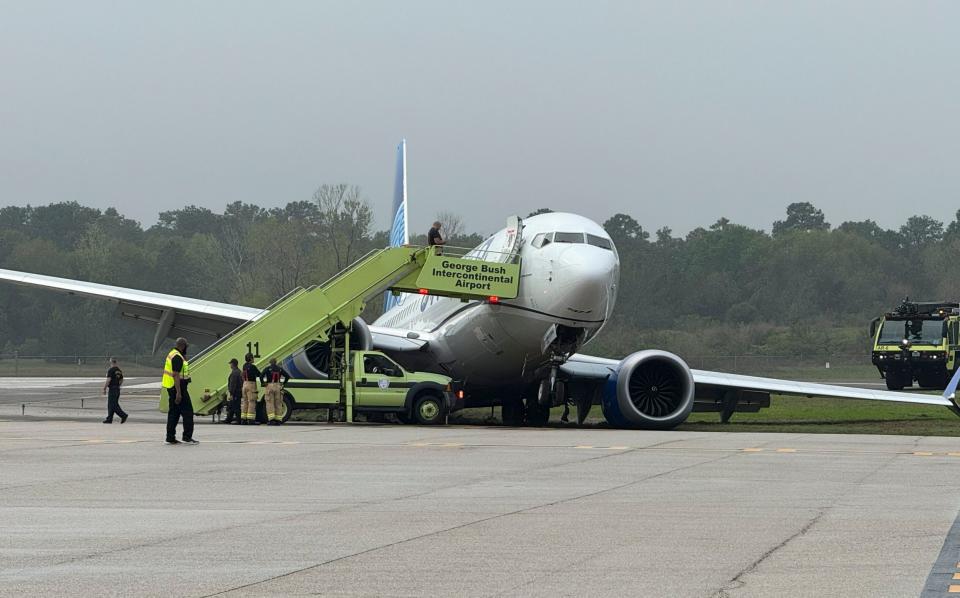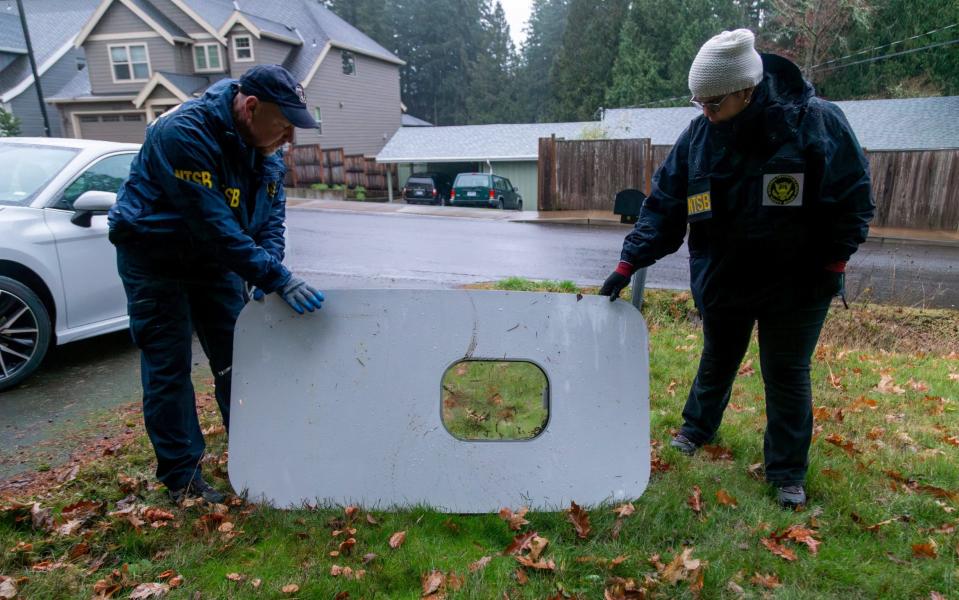How Boeing went from an American dream to national embarrassment

- Oops!Something went wrong.Please try again later.
“Boeing has won for 100 years because of innovation, and we’re going to continue to win in our second century with innovation,” said Dennis Muilenburg at the corporation’s centenary celebration in 2016.
“We can’t stand still. We have to drive forward. We’re currently building the rocket with Nasa that will take the first human to Mars.”
Surrounded by current and former employees on Boeing Field, Seattle, the company’s then chief executive had every reason to be optimistic.
Decades of aerospace innovation had given Boeing a reputation as one of the most dynamic companies in the world, and one of the US’s top firms.
The airliner giant was about to embark on a 20-month stock run that would see its share price rise to an all-time high. It was consistently delivering more commercial planes than its old rival, Airbus.
Donald Trump, then running for his first term in the White House, would go on to strike a deal for the company to deliver a new model of Air Force One.
Door plug falls off at 16,000 feet
Eight years on, Boeing is facing its worst crisis in history, and has plummeted from its status as an archetypal American manufacturing leviathan to a national embarrassment.
On January 5, the company made headlines when the door plug of a Boeing 737 Max 9 jet operated by Alaska Airlines fell off at 16,000 feet.
Terrified passengers saw their bags, clothes and mobile phones sucked out of the plane as it rapidly depressurised and, for minutes, most on board feared for their lives.
Some on the Alaska Airlines flight say they are so traumatised by their experience that the sound of a commercial jet overhead is enough to trigger panicked memories. Three have filed a lawsuit for $1 billion in damages.

The launch of an investigation by the Federal Aviation Authority (FAA) was not the worst of the company’s worries, nor the first time that it had been probed over the same model of plane.
In March 2019, the 737 Max was grounded for 20 months after 346 people died in two similar crashes that investigators later discovered were linked to a new flight stabilisation feature Boeing had installed.
The ill-fated model went on to be certified again by the US transport authorities, with Boeing paying billions in damages to the airlines involved and the families of victims, and a further $243 million in criminal penalties.
Since the January 5 incident, the company has been suffering from a hellish version of the Baader–Meinhof Phenomenon: once one report of a failure at the company surfaced, they began to appear everywhere.
The following week, a 737 flying between the Japanese cities of Sapporo and Toyama was forced to land after a crack was discovered on a cockpit window. The week after that, a 747-8 was forced to make an emergency landing in Miami after it was reported to be on fire in mid-air.
In just the past three weeks, there were reports of a 737 Max that slid off a runway while landing in Houston, a 737-900 that was forced to land after flames were spotted spewing from its engine, a tyre that fell off a 777 in San Francisco and a cargo hold left ajar in Portland.

Last weekend, a safety whistleblower at a Boeing factory in South Carolina was discovered dead in his car from an apparent suicide, while last Monday, a Boeing 787-9 Dreamliner nosedived during a flight from Sydney to Auckland, injuring dozens of passengers.
“You know in ‘The Exorcist,’ when the girl flies from the bed and hits the ceiling? It’s exactly that scene,” Brian Jokat, who was woken from sleep by the nosedive and slammed into the roof of the cabin, told the Wall Street Journal.
This week ended with reports of a 737-800 that arrived at Portland International Airport with part of an underside panel missing.
Boeing’s share price has plummeted 27 per cent this year
Karine Jean-Pierre, the White House press secretary, would not confirm to reporters that it was safe for Americans to fly on Boeing planes.
The incidents have seen Boeing’s share price plummet by 27 per cent since the start of the year, becoming the second-worst performer in the S&P 500, behind Tesla.
Economists have warned that as the US’s biggest exporter, a collapse in enthusiasm for Boeing could affect America’s balance of trade. A national 6.1 per cent drop in orders for durable goods in the latest bulletin from the US Department of Commerce last month was largely due to a fall in demand for the company’s planes.
Boeing’s woes even made it into the televised rant of John Oliver on HBO’s Last Week Tonight, where the host blamed the company’s focus on sales over safety for the series of problems.
“It’s beginning to feel like this might be a much broader issue within Boeing, because it comes on the heels of a years-long string of alarming incidents,” he said.

Boeing managers in crisis mode
The problems at Boeing have been blamed on a corporate culture that dates back to its merger with McDonnell Douglas, another aeroplane manufacturer, in 1997. Since then, the company has focused on its share price, buying back its own stock to inflate the price while cutting manufacturing costs by outsourcing many of its planes’ components.
The safety and production problems have seen Airbus, Boeing’s European rival, overtake it in orders. At $2.4 billion, the size gap between the two companies is now at its largest ever, and it is likely that the full effects of this year’s problems are yet to be seen.
The lag in airliner orders means it is not easy for commercial operators to shift their purchases from Boeing to Airbus – and pilots are generally trained on the stock of one manufacturer or the other.
At Boeing’s headquarters in Arlington, Virginia, managers are now in crisis mode. On March 7, Boeing announced its annual employee bonuses for white collar workers would be directly linked to safety and quality, rather than financial performance, in a nod to the company’s recent issues.
But with resignations currently limited to the executive in charge of the 737 Max programme, some have called for the departure of the top brass. Dave Calhoun, who has led the company since 2020, remains in his job alongside the rest of the firm’s top employees.
“If you ask me, the first thing that needs to happen for Boeing to gain trust is to basically fire the entire C suite,” Gad Allon, a professor at the Wharton School of Business told CNN.
“I know that will not happen, but…there is not a single person that has a C in front of their title that is not responsible for what we’re seeing now.”

